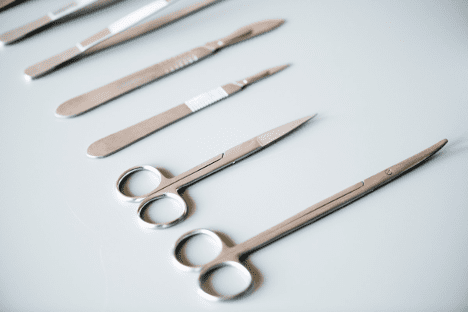
Hospital acquired infections (HAIs) aren’t nearly as frequent now as they were before Joseph Lister developed antiseptics in response to Louis Pasteur’s germ theory. In Lister’s day, post-operative fatalities were common (up to 50 percent of amputee patients alone). While lower — the CDC estimates 1 in 31 patients will develop an HAI* — the number is still higher than it should be. Cleaning, disinfection, sanitization, and sterilization each have a part to play in making that happen, and medical equipment supplies from Great Lakes Imaging can help.
Why Decontamination is Important
Infections are hardly limited to a hospital setting, nor to surgery. Airborne illnesses like COVID and influenza can be transmitted in clinical settings. So too can other bacterial and viral pathogens, spread via exam tables, chiropractic tables, instruments, and examination equipment. These illnesses can prolong recovery time, cause severe complications, or in extreme cases, even lead to the death of patients.
Effective decontamination procedures improve patient outcomes. Just as importantly, they decrease practices’ liability risk and chances of a costly malpractice suit in the process.
Decontamination Definitions and Differences
While the broad goal of maintaining cleanliness in order to reduce the risk of infection, complications, and death is common among each of these procedures, they differ in their methods, tools, and the time taken.
- Cleaning uses detergents or enzymes to reduce the amount of soil or residue (such as dried blood and other bodily fluids) on a surface.
- Sanitization reduces the number of pathogens on a surface, thereby reducing the chance of sickness.
- Disinfection aims to kill pathogens like bacteria and viruses, rather than simply reducing their number. This requires stronger chemicals, and longer exposure periods, but may still leave some organisms (like spores) behind.
- Sterilization, in contrast to the other methods mentioned, seeks to eliminate all pathogens on a given surface, and may use steam or dry heat, pressure, and chemicals (vaporized hydrogen peroxide, bleach, ozone, or plasma gas among them) either separately or in combination.
Disinfection and Sanitization Processes
The CDC identifies three categories of instruments, each with its own decontamination guidelines.
- Critical instruments penetrate soft tissue or bone, or come into contact with the bloodstream. These instruments, including scalers, scalpels, forceps, and surgical drill burs and bits, should be considered single-use items in the absence of contrary guidance from the manufacturer.
- Semi-critical instruments may come into contact with non-intact skin or mucous membranes. This includes impression trays, intra-oral cameras, and radiography sensors, which should all be sterilized after every use.
- Non-critical devices are strictly for external use, and will generally only come into contact with intact skin. Blood pressure cuffs, stethoscopes, x-ray heads, exam tables, and bed rails are among the many items falling into this category, and they’re suitable for reuse after they have been properly decontaminated.
It’s not uncommon to work through multiple steps in sequence, using cleaning, then sanitization, as preliminary steps to either disinfection or sterilization. This is done to remove larger debris that could interfere with the killing of pathogens.
Because of the types of processes and chemicals used, cleaning, sanitization, and disinfection are not typically suited to instruments that will be used in surgery, endoscopy, dental procedures, and the like; these chemicals, like pesticides, can cause illness or injury to patients if ingested or used internally. However, they’re very well-suited to keeping exam tables, chiropractic tables, and other high-contact surfaces safer for your patients.
Products Used for Decontamination
While Great Lakes Imaging specializes in imaging equipment across a wide range of disciplines — from podiatry to veterinary medicine to dentistry — we also recognize the needs that our clients have for effective decontamination. For this reason, we offer suitable solutions for the disinfection of chiropractic tables, x-ray and ultrasound equipment, podiatry equipment, and more. For a consultation on your practice’s needs — from patient safety to custom design services — get in touch today.
*Centers for Disease Control, HAI Data
